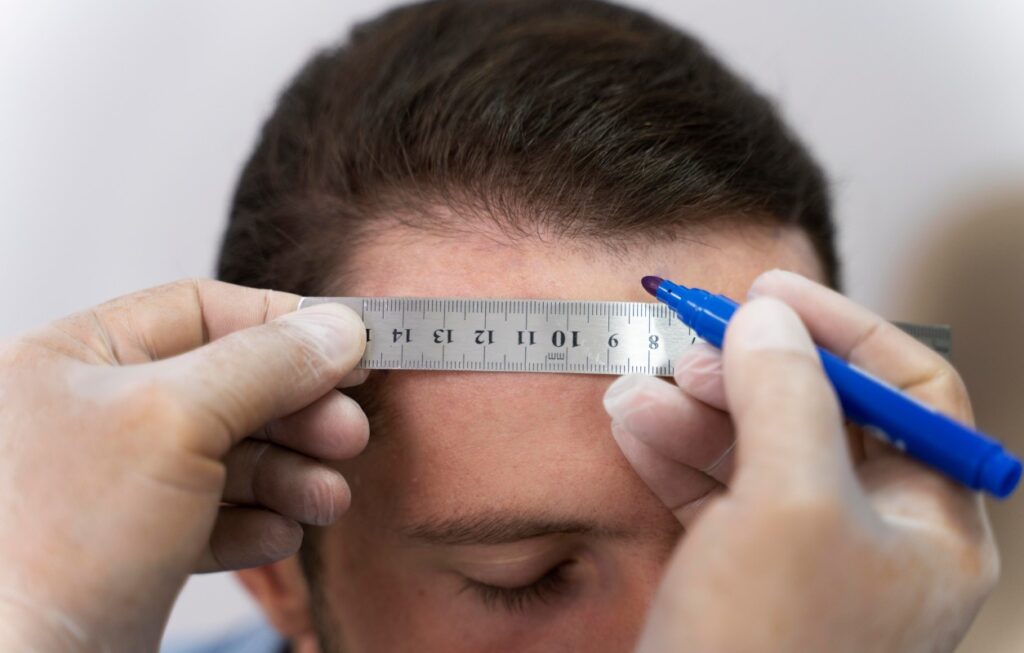When it comes to hair transplants, one of the most crucial factors determining the success of the procedure is the design of the hairline. A well-crafted, natural-looking hairline can enhance a person’s overall appearance and boost their confidence, while an unnatural hairline can lead to disappointing results and dissatisfaction. Understanding the principles of natural hairline design is essential for both patients and surgeons involved in the hair restoration process.
The Importance of Hairline Design
A hairline is often one of the first features people notice about an individual’s hair. It frames the face and plays a significant role in establishing one’s overall aesthetic. An effective hairline design takes into account the following factors:
- Facial Features: The hairline should complement the individual’s facial structure, enhancing their natural features. A skilled surgeon considers the width of the forehead, the shape of the jawline, and the overall proportions of the face when designing a hairline.
- Age Consideration: The ideal hairline for a young adult may differ significantly from that of an older individual. Younger patients may opt for a more youthful, lower hairline, while older patients may benefit from a slightly higher, more mature hairline. Achieving age-appropriate designs is vital for maintaining a natural appearance.
- Gender Differences: Hairlines vary between men and women. Men typically have a more pronounced and straight hairline, while women often have a softer, more curved hairline. A skilled surgeon tailors the design to align with gender-specific characteristics, ensuring the result feels natural.
Principles of Natural Hairline Design
To achieve a natural hairline, surgeons employ several guiding principles:
- Irregularity: A natural hairline is rarely a straight line; it often has subtle irregularities. These irregularities mimic the way hair grows naturally and prevent the hairline from appearing artificially drawn on. Techniques such as varying the angles and placements of grafts help create this effect.
- Frontal Zone Design: The frontal hairline is where the hairline meets the forehead. A natural design typically includes a gradual transition from the hairline to the scalp, often featuring a widow’s peak or slight dips that enhance the appearance of natural growth. This zone should look dense and youthful, as it is the most visible area.
- Temporal Angles: The temples are often a focal point in hairline design. The hairline should gently curve back toward the temples, creating a natural frame for the face. Maintaining appropriate angles and density in this area is essential for achieving a balanced look.
- Density Variation: Hair density is not uniform along the hairline. The density tends to be highest at the frontal hairline and gradually decreases as you move back toward the crown. Mimicking this natural density gradient is crucial for achieving a realistic appearance.
- Natural Hair Growth Patterns: Hair does not grow in uniform patterns; it grows in varying directions. A skilled surgeon takes this into account, angling hair follicles appropriately to mimic natural growth patterns. This attention to detail helps create a seamless integration of transplanted hair with existing hair.
The Role of Advanced Techniques
With advancements in technology and surgical techniques, the art of hairline design has become more sophisticated. Some of these techniques include:
- Follicular Unit Extraction (FUE): This method allows for the extraction of individual hair follicles, giving surgeons greater control over the placement and angling of each graft. This precision is vital for creating a natural hairline.
- Robotic Assistance: The use of robotic systems can enhance the accuracy of graft placement, ensuring that the angles and directions of the transplanted hair align with the patient’s natural growth patterns.
- 3D Imaging and Planning: Advanced imaging technologies allow surgeons to visualize the hairline from different angles before the procedure, enabling them to plan the design with precision. This can lead to improved outcomes and patient satisfaction.
Patient Involvement in Design
Successful hairline design is a collaborative process. Patients should be actively involved in discussions regarding their desired outcomes. Factors to consider include:
- Realistic Expectations: Surgeons should provide patients with realistic expectations about the potential outcomes based on their unique hair characteristics, hair loss patterns, and age.
- Consultation and Feedback: Engaging in open discussions about preferred styles and hairline designs can help surgeons align their artistic vision with the patient’s desires, ensuring a satisfactory result.
Conclusion
The art of natural hairline design in hair transplants requires a delicate balance of science and artistry. By understanding the principles of natural hairline aesthetics and employing advanced techniques, skilled surgeons can create results that not only enhance appearance but also restore confidence. For patients considering a hair transplant, being informed about the design process and actively participating in the planning can lead to a more satisfying outcome, resulting in a hairline that looks and feels completely natural. Whether for aesthetic enhancement or emotional rejuvenation, a well-designed hairline can significantly impact an individual’s self-esteem and quality of life.



